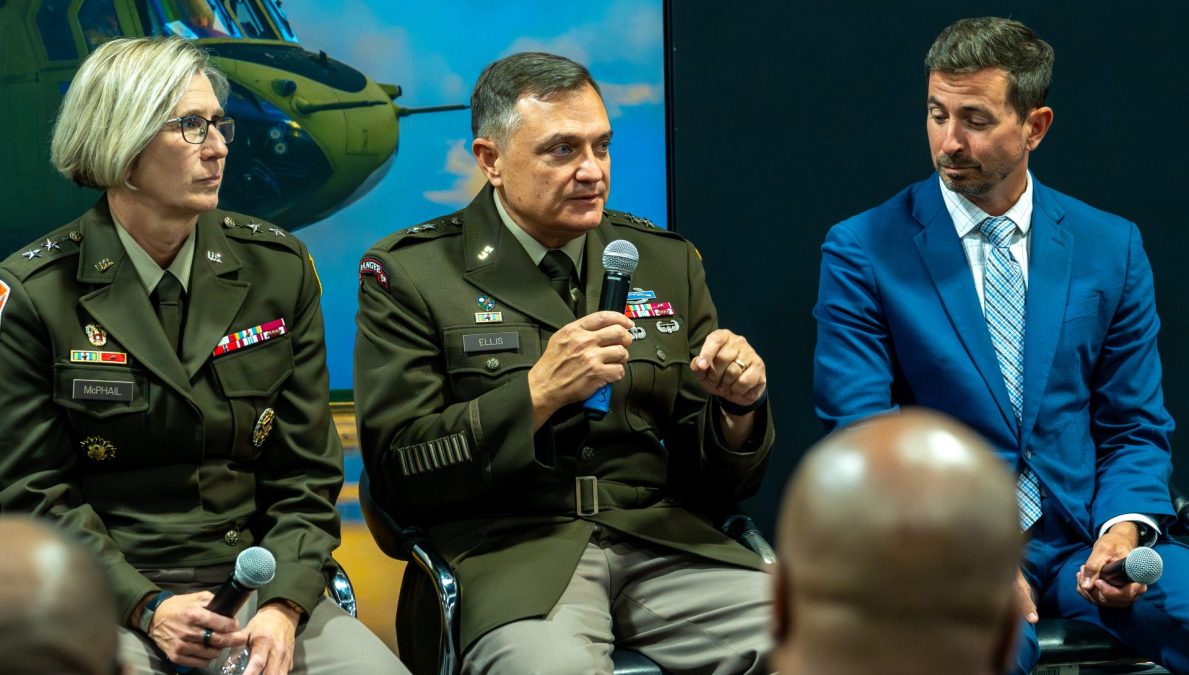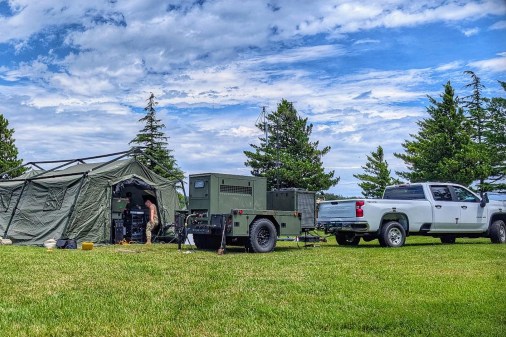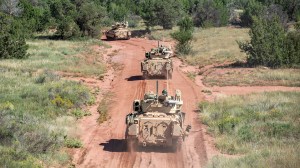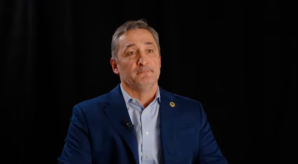General in charge of Army’s Next-Gen C2 experiment takes command of unit getting prototype

ABERDEEN PROVING GROUND, Md. — Maj. Gen. Patrick Ellis will be the next commander of 4th Infantry Division at Fort Carson, Colorado.
The move is significant as 4th ID is slated to be the primary experimental unit for the Army’s Next Generation Command and Control as that system aims to scale up to division level.
NGC2 is one of the the Army’s top modernization priorities. It’s a clean-slate design for how the Army communicates on the battlefield and passes data for operations, providing commanders and units a new approach to information, data and command and control through agile and software-based architectures.
The Army tested a prototype of the system in March at Project Convergence Capstone 5. It was the first experiment on the ground with a unit in the classified network. It was outfitted to a real battalion — an armored formation — as well as higher headquarters elements. The Army sought to use an armored unit rather than the more easy to integrate light units as a means of testing the most difficult formation first and beginning to rightsize the Army, as those lighter units have surpassed many heavier ones in new gear due to the integration challenges associated with platforms.
As part of that effort, the Army developed a horizontal operational design for NGC2 that involved a technology stack that goes from a transport layer to an integration layer to a data layer to an application layer, which is where soldiers interact with it. The application layer is where the Army has broken down the silos of individual warfighting functions — such as intelligence or fires — into applications that ride on the same backbone that is all integrated together.
Ellis comes to 4th ID having just been the director of the C2 Cross Functional Team with Army Futures Command, where he spearheaded the experimental efforts of NGC2 — giving him a unique perch to now serve as the commander of the first division to begin testing it out holistically.
“It’s a great opportunity to work on this, build the relationships over the last year,” he said in a May 30 interview on the sidelines of the Army’s Technical Exchange Meeting at Aberdeen Proving Ground, Maryland, on his last day as the C2 CFT director.
To date, the Army’s experimentation and modernization efforts have focused on brigades. As the division is expected to be the primary action unit in the future, the service is starting to look at how to scale capabilities across the entire 10,000-15,000 soldier unit.
4th ID will continue to iterate on the prototype and make improvements while program executive office for command, control, communications and network runs the program of record. In early April, C3N officially stood up the program office, with Col. Chris Anderson becoming the first program manager. In addition to 4th ID scaling the prototype, 25th ID will also be prototyping elements of NGC2.
As the division commander, Ellis will reap what he helped develop and provide unique insights back to the Army regarding how the system better enables him to command and control his forces.
“You also, as a commander, now can ask the hard questions and say, ‘I don’t think that’s the node that we should take, maybe we could move to this one, or here’s where there’s going to be legitimate friction,’” he said. “I’m really excited about the opportunity to do that and I appreciate the chance that the Army has given me to continue to work on this problem that I’m pretty passionate about. I really enjoy this and I think it’s going to be fun to take this capability now and actually work on the scaling up to an entire division.”
Officials have acknowledged the complexity in moving NGC2 up to the division level, especially considering the prototype was kitted to mainly the battalion level at Project Convergence. As the Army seeks to move complexity up and fight as a division, enabling brigades — such as sustainment, aviation, artillery and intelligence — must be equipped with comms gear as well. These enabler units will now begin to be a top focus.
Ellis said one of the things he’ll be focusing on early on is continual evolution of the capability with multiple touchpoints with industry, as opposed to more periodic fits and starts.
“I’ve learned we can’t work on a problem and then come back to it three months later in an exercise, and then come back to it three months later, and then three months later we’re at [Project Convergence Capstone 6]. I think there’s going to have to be a continual evolution,” he said. “We don’t need to wait until it’s perfect and then put it in the hands of a soldier. We need to get the 60 percent in their hands and let them help us with that last 40 percent — and that’s going to require some continual interaction with units.”
Filling Ellis’ place will be Col. (P) Michael Kaloostian, who was one of two colonels that were the main architects of the NGC2 experimentation efforts for Futures Command, culminating in the Project Convergence experimentation. This will allow Kaloostain to continue work on the project as the director.
“I didn’t get a chance to pick the guy that was coming after me, but if I did get to pick, it would be the guy who’s coming in after me,” Ellis said about Kaloostian. “He’s been doing this for a year, he’s got all the technical knowledge, and then he brings that capability here. And then for me to move on and keep the relationships and some of the shared experience [is beneficial]. I think part of it is, it’s just the shared history, is now there’s a little bit of a common parlance between us. Then as you get out there you know where the pitfalls are going to be. I think some of the problems are very solvable.”






